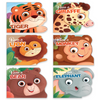Ensuring children’s safety is a top priority for parents, teachers, and caregivers. Kids are naturally curious and active, which sometimes leads to minor injuries or emergencies. Teaching them basic first aid and safety habits can help prevent accidents and equip them with the confidence to handle small emergencies effectively. Here are some essential first aid and safety tips that every child should learn:
1. Understanding Basic First Aid
Children should be familiar with the basics of first aid so they can take action when needed. Teach them simple skills such as:
-
How to clean and cover a minor cut or scrape
-
Recognising when to seek help from an adult
-
Applying ice to a bruise or bump
Knowing these small yet effective actions can prevent infections and speed up recovery.
2. Knowing Emergency Contact Numbers
Kids should know how and when to dial emergency services like 100/101 (or the equivalent in your country). Ensure they understand:
-
When to call for emergency help
-
Their home address and parent/guardian contact numbers
-
How to describe an emergency clearly to responders
Practicing emergency calls in a safe, supervised way helps kids gain confidence in seeking help when needed.
3. Preventing Choking Hazards
Choking is a common risk among young children. Teach them to:
-
Chew food properly and avoid talking while eating
-
Avoid putting small objects in their mouths
-
Alert an adult if they or someone else is choking
Knowing the Heimlich maneuver (for older kids) or quickly seeking help can be life-saving.
4. Fire Safety Rules
Fire safety knowledge can help prevent dangerous situations. Teach kids to:
-
Stop, Drop, and Roll if their clothes catch fire
-
Never play with matches, lighters, or electrical outlets
-
Identify the nearest exit in case of a fire
Conducting fire drills at home can help them practice safety measures effectively.
5. Road and Traffic Safety
Kids should understand basic road safety rules to avoid accidents. Encourage them to:
-
Always look both ways before crossing the street
-
Walk on sidewalks and use pedestrian crossings
-
Wear helmets while riding bicycles or scooters
Supervised outdoor play can reinforce these safety habits.
6. Water Safety Precautions
Water safety is crucial, especially for young children. Important lessons include:
-
Never swimming alone or without adult supervision
-
Avoiding running near pools or water bodies
-
Learning basic floating or swimming techniques
Enrolling kids in swimming lessons can boost their confidence and safety in the water.
7. Handling Bumps and Bruises
Minor falls and bruises are common in children. Teach them:
-
To stay calm and assess the injury
-
Apply an ice pack on swollen areas
-
Inform an adult immediately if in pain
Encourage them to be cautious but not fearful of physical activities.
8. Staying Safe and Handling of Household Items
Accidents at home can be prevented by teaching kids to:
-
Stay away from sharp objects (scissors, knives)
-
Avoid touching hot stoves, kettles, or electrical appliances
-
Not attempt any stunts, like putting their head between railings
Childproofing the home further ensures safety.
9. Stranger Danger Awareness
Personal safety is essential for kids when interacting with strangers. Teach them:
-
To never accept gifts or rides from strangers
-
To always inform parents or guardians about their whereabouts
-
To say ‘No’ firmly and seek help if they feel unsafe
Role-playing safety scenarios can prepare kids for real-life situations.
10. Recognising Poisoning Hazards
Children should be aware of potential poisoning risks at home. Teach them:
-
Never to eat or drink anything unknown
-
The importance of keeping household chemicals locked away
-
Informing an adult immediately if they feel unwell after ingesting something suspicious
Keeping toxic substances out of reach adds another layer of protection.
Final Thoughts
Teaching kids basic first aid and safety tips empowers them to be more aware of their surroundings and take appropriate action in emergencies. As parents and caregivers, practicing these lessons regularly and leading by example can reinforce their learning. A well-prepared child is a safer and more confident one!








